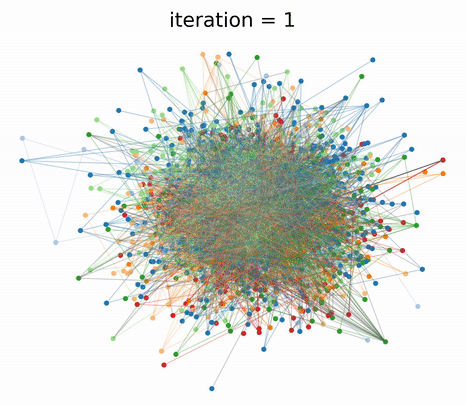GraphTSNE: A Visualization Technique for Graph-Structured Data
International Conference on Learning Representations 2019
Workshop for Representation Learning on Graphs and Manifolds

GraphTSNE on the Cora Citation Network
The code demo_notebook.ipynb creates a visualization of the Cora citation network using GraphTSNE. The original Cora dataset and other citation networks can be found here: http://linqs.cs.umd.edu/projects/projects/lbc/.
The notebook takes roughly 3 minutes to run with GPU, or 8 minutes with CPU.
# Install Python libraries using conda
conda env create -f environment.yml
conda activate graph_tsne
python -m ipykernel install --user --name graph_tsne --display-name "graph_tsne"
# Run the notebook
jupyter notebookFor visualizing graph-structured data such as social networks, functional brain networks and gene-regulatory networks. Concretely, graph-structured datasets contain two sources of information: graph connectivity between nodes and node features.
If you use GraphTSNE in your work, we welcome you to cite our ICLR'19 workshop paper:
@inproceedings{leow19GraphTSNE,
title={GraphTSNE: A Visualization Technique for Graph-Structured Data},
author={Leow, Yao Yang and Laurent, Thomas and Bresson, Xavier},
booktitle={ICLR Workshop on Representation Learning on Graphs and Manifolds},
year={2019}
}